Lesicheri Obelisk – Enigmatic Ancient Roman Structure – Bulgaria’s Tallest Surviving Landmark
A. Sutherland - AncientPages.com - A remarkable landmark, a surviving 14-meter ancient Roman Obelisk is located near the Veliko Tarnovo district village of Lessicheri in the North-Central region of Bulgaria.
The Lesicheri pillar and the ruins of the second one (after Kanitz 1882, 5, engraving # 2). The Lesicheri Pillar and the Transfer of Funerary Architecture Trends from Bithynia to Roman Thrace - D. Delchev, Milena Raycheva
Following the first scholarly publication in 1882, the so-called Lesicheri Obelisk, located near a historic site Nicopolis ad Istrum has been widely discussed in the literature as a component of a more extraordinary complex related to a religious cult or could be sepulchral.
The thousand-year-old history and culture of the region of Tarnovo are traced out there.
Veliko Tarnovo - the capital of Bulgaria in the 12th- 14th century - is one of the oldest settlements in Bulgaria, with a history of more than five millennia. The first traces of human presence, dating from 3,000 BC, were discovered on Trapezitsa Hill.
Ancient Roman Obelisk, one of two originally, was part of a mausoleum-turned-shrine near Bulgaria's Lesicheri. Once, a second identical obelisk existed nearby, and its ruins were identified by visiting geographers and archaeologists in the late 19th century.
This remarkable 13.8-meter column of painstakingly hewn blocks of local stone is also part of the memorial tomb of Quintus Julius, a prominent Roman figure from the nearby large city of Nicopolis ad Istrum, who lived in the 2nd century AD, according to an ancient inscription.
Quintus Julius was a Roman senator who held several posts in the emperor's service. Both the emperors Claudius and Nero well thought of this prestigious individual.
He was also a prominent supporter of a Roman emperor, Vespasian, who reigned from AD 69 to 79. From history books, we remember him as the fourth and last emperor who reigned in the Year of the Four Emperors. Quintus Julius was rewarded by being made consul only a few months after Vespasian arrived in Rome. Emperor Vespasian needed Quintus Julius' assistance and trusted him. Later, Quintus held other civic and military positions, including three governorships, pontifex, and urban prefect of Rome.
Roman Obelisk, Lesicheri, Bulgaria. Image credit: Powerfox - CC BY-SA 4.0
Felix Philipp Kanitz (1829 – 1904) was an Austro-Hungarian geographer, ethnographer, and archaeologist, who conducted a thorough research of the South Slavs, particularly those in modern Serbia and Bulgaria. Kanitz carefully examined the Obelisk area and found and described the remains of a second, destroyed pillar on which the stones lay on the ground. He also examined a fragmentary inscription found near the Lesicheri pillar and sketched it. Unfortunately, the document was lost.
The scientists also discovered fragments of marble reliefs and parts of a large monumental building that once existed there.
According to his research, the Bulgarians from the surrounding villages used to call the monument "Pillar" while the Turkish name was "Dikilitash" (Obelisk). Kanitz associated the structure with the Roman building style and mistakenly assumed the Lesicheri Obelisk was a part of the Roman aqueduct.
Legend Of Two Boys Who Were In Love With The Same Girl
Putting history aside, one can also mention the legend of the Lesicheri column.
Locals say the Obelisk is Markov Kamak or The Stone of Marko. According to the story, Marko and another boy were in love with the same girl.
The young woman liked the other man better than Marko but decided to set up a competition for her two suitors. She said she would marry the one who could build the tallest and strongest pillar. Marko was a powerful man who constructed a magnificent massive pillar for the young lady. The other boy was not a skilled builder, and his creation was far less impressive. Marko won the competition, but the girl still wanted to marry the other boy and announced him as the winner. Marko was furious and smashed his rival's small Obelisk in rage before walking away. The legend explains what happened to the other Obelisk, but history tells a different story.
Were The Two Obelisks Related To Emperor Trajan's Triumph Over The Dacians?
Later in the 19th century, it was theorized that two obelisks belonged to a colonnade built at the beginning of the 2nd century to honor the triumph of Emperor Trajan (98-117) over the Dacians. Several decades later, the enigmatic remains of one of the obelisks were almost lost forever. In 1937, locals used the broken pillar and the surrounding fragments to construct a local road. In 1948, the taller column (we can see today) was also in danger of being totally devastated when the villagers tried to remove it with ox carts or blow it up.
Fortunately, they failed.
The Obelisk and its long-lost twin structure belonged to the family mausoleum of Quintus Julius, a cult priest to the emperor and a Roman senator who held several posts in the emperor's service and lived in the 2nd century in Nicopolis ad Istrum, near the modern Nikyup village.
Proper excavations of the site began in the 1990s, and it was then that the Obelisk was adequately explained.
The Obelisk and its long-lost twin structure belonged to the family mausoleum of Quintus Julius, a cult priest to the emperor and a Roman senator who held several posts in the emperor's service and lived in the 2nd century in Nicopolis ad Istrum, near the modern Nikyup village.
The mausoleum was an impressive complex with a pediment of stone, and two statues of lions guarded its entrance. There were probably statues of the deceased, together with one of the Thracian God Rider (also the "Thracian horseman" (or "Thracian Rider"), a motif frequently used in reliefs of the Hellenistic and Roman periods in the Balkans, mainly Thrace, Macedonia, Thessaly, from the 3rd century BC to the 3rd century AD. The temple survived until the 4th century. Then, it was most probably destroyed by some fanatics when the Roman Empire was Christianized. There were times when barbarian invasions still plagued the provinces in today's Northern Bulgaria.
The Lesicheri Obelisk - Bulgaria's tallest surviving landmark still stands and guards its history.
Written by – A. Sutherland - AncientPages.com Senior Staff Writer
Copyright © AncientPages.com All rights reserved. This material may not be published, broadcast, rewritten or redistributed in whole or part without the express written permission of AncientPages.com
Expand for referencesMore From Ancient Pages
-
 Story Of Uncle Sam – Symbol Of The United States Government
Ancient Symbols | Apr 24, 2017
Story Of Uncle Sam – Symbol Of The United States Government
Ancient Symbols | Apr 24, 2017 -
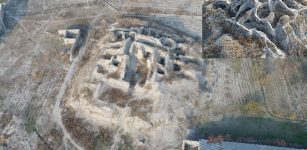 Sogdian Temple Of Jartepa II On Caravan Road Of The Silk Road
News | Sep 3, 2020
Sogdian Temple Of Jartepa II On Caravan Road Of The Silk Road
News | Sep 3, 2020 -
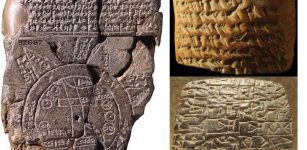 Cuneiform Tablets: One Of The Earliest Systems Of Writing Invented By The Sumerians
Civilizations | May 8, 2017
Cuneiform Tablets: One Of The Earliest Systems Of Writing Invented By The Sumerians
Civilizations | May 8, 2017 -
 Fulani: Africa’s Pastoralists Traced To Green Sahara Period,12,000 – 5,000 Years Ago
DNA | Feb 26, 2025
Fulani: Africa’s Pastoralists Traced To Green Sahara Period,12,000 – 5,000 Years Ago
DNA | Feb 26, 2025 -
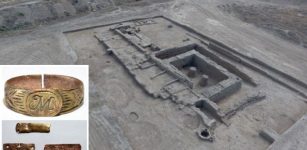 Stunning Ancient Khanqah With Large Underground Crypt, Ritual Halls And Burials Discovered In Turkestan
Archaeology | Aug 14, 2020
Stunning Ancient Khanqah With Large Underground Crypt, Ritual Halls And Burials Discovered In Turkestan
Archaeology | Aug 14, 2020 -
 Surprising Inscription Discovered On Birka Ring – Ancient Viking Artifact
Archaeology | May 13, 2015
Surprising Inscription Discovered On Birka Ring – Ancient Viking Artifact
Archaeology | May 13, 2015 -
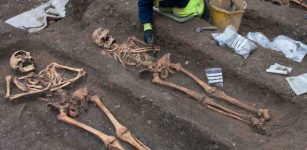 Medieval Friars Were ‘Riddled With Parasites,’ Study Finds
Archaeology | Aug 19, 2022
Medieval Friars Were ‘Riddled With Parasites,’ Study Finds
Archaeology | Aug 19, 2022 -
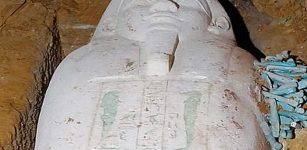 Limestone Sarcophagus, Ushabti Figures Unearthed In Minya’s Al-Gharafa Area, Egypt
Archaeology | Oct 3, 2020
Limestone Sarcophagus, Ushabti Figures Unearthed In Minya’s Al-Gharafa Area, Egypt
Archaeology | Oct 3, 2020 -
 Forbidden High-Tech Knowledge Of A Controversial Ancient Lost Super Race
Ancient Mysteries | Jun 22, 2018
Forbidden High-Tech Knowledge Of A Controversial Ancient Lost Super Race
Ancient Mysteries | Jun 22, 2018 -
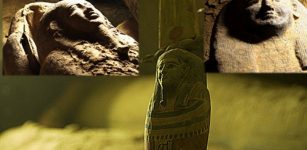 Collection Of 2,500 Years Old Sealed Coffins Unearthed In Saqqara, Egypt
Archaeology | Sep 8, 2020
Collection Of 2,500 Years Old Sealed Coffins Unearthed In Saqqara, Egypt
Archaeology | Sep 8, 2020 -
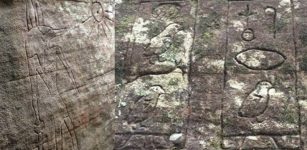 Mysterious Gosford Glyphs: Remarkable Ancient Egyptian Hieroglyphs Discovered In Australia Could Re-Write History
Featured Stories | Feb 20, 2020
Mysterious Gosford Glyphs: Remarkable Ancient Egyptian Hieroglyphs Discovered In Australia Could Re-Write History
Featured Stories | Feb 20, 2020 -
 Jelling Stone And Legendary Harald ‘Bluetooth’ King Of Denmark – ‘Who Made The Danes Christian’
Vikings | Oct 10, 2015
Jelling Stone And Legendary Harald ‘Bluetooth’ King Of Denmark – ‘Who Made The Danes Christian’
Vikings | Oct 10, 2015 -
 Extraordinary 5,000-Year-Old Astronomical Event Depicted On Indian Rock Carving
Archaeoastronomy | Jan 9, 2018
Extraordinary 5,000-Year-Old Astronomical Event Depicted On Indian Rock Carving
Archaeoastronomy | Jan 9, 2018 -
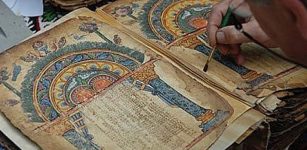 Illuminated Ancient Manuscripts Reflect 1,000 Years Of Human History
Artifacts | Sep 12, 2015
Illuminated Ancient Manuscripts Reflect 1,000 Years Of Human History
Artifacts | Sep 12, 2015 -
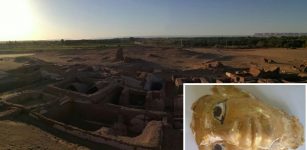 Five Ancient Roman Tombs With Different Architectural Style Discovered In Egypt
Archaeology | Aug 26, 2017
Five Ancient Roman Tombs With Different Architectural Style Discovered In Egypt
Archaeology | Aug 26, 2017 -
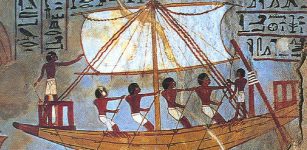 Mysterious Sherbrooke Stones – Did Africans Visit North America 2,500 Years Ago?
Artifacts | Nov 23, 2017
Mysterious Sherbrooke Stones – Did Africans Visit North America 2,500 Years Ago?
Artifacts | Nov 23, 2017 -
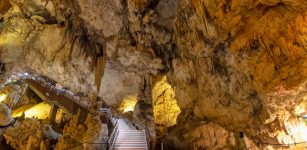 Evidence Humans Have Visited Caves Of Nerja For 41,000 Years – Found!
Archaeology | Apr 25, 2023
Evidence Humans Have Visited Caves Of Nerja For 41,000 Years – Found!
Archaeology | Apr 25, 2023 -
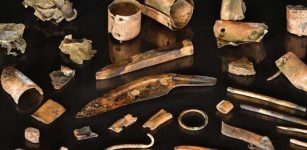 Unique Belongings Of Bronze Age Warrior Offer Evidence Of Massive Violent Conflict In Europe
Archaeology | Oct 18, 2019
Unique Belongings Of Bronze Age Warrior Offer Evidence Of Massive Violent Conflict In Europe
Archaeology | Oct 18, 2019 -
 Scribes: One Of The Noblest And Highly Recommended Professions In Ancient Egypt
Featured Stories | May 10, 2023
Scribes: One Of The Noblest And Highly Recommended Professions In Ancient Egypt
Featured Stories | May 10, 2023 -
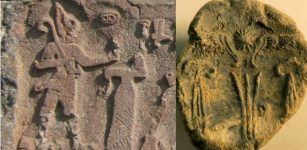 Ancient Clay Seals That Could Re-Write Hittite History Discovered In Kayalıpınar, Turkey
Archaeology | Sep 14, 2023
Ancient Clay Seals That Could Re-Write Hittite History Discovered In Kayalıpınar, Turkey
Archaeology | Sep 14, 2023



